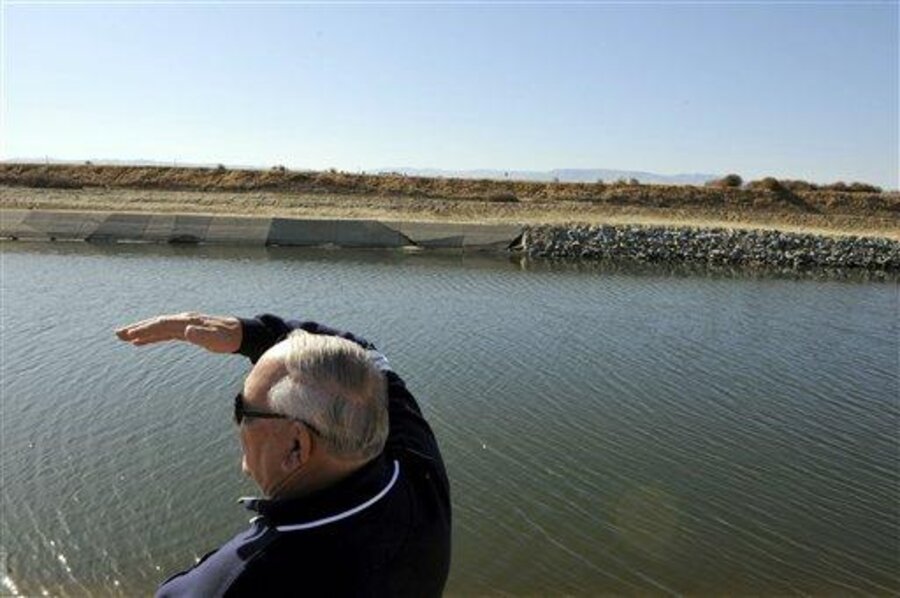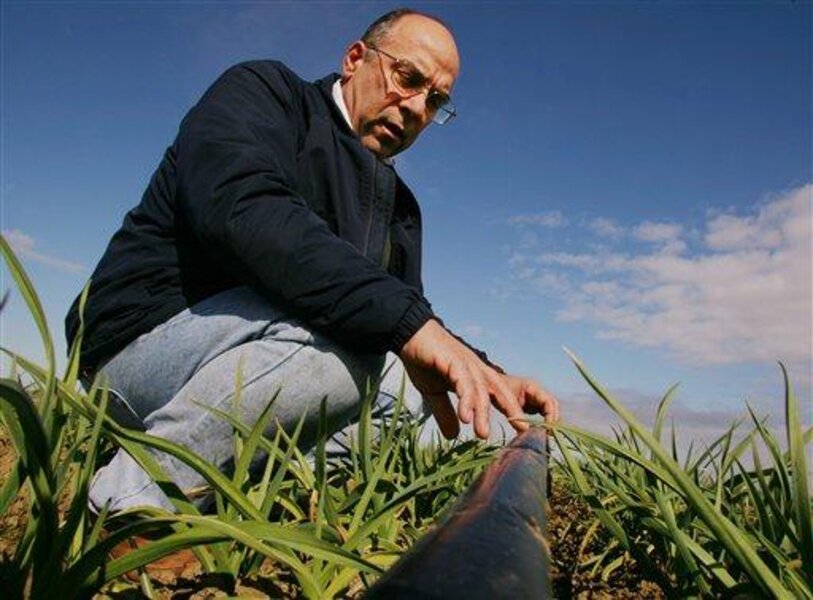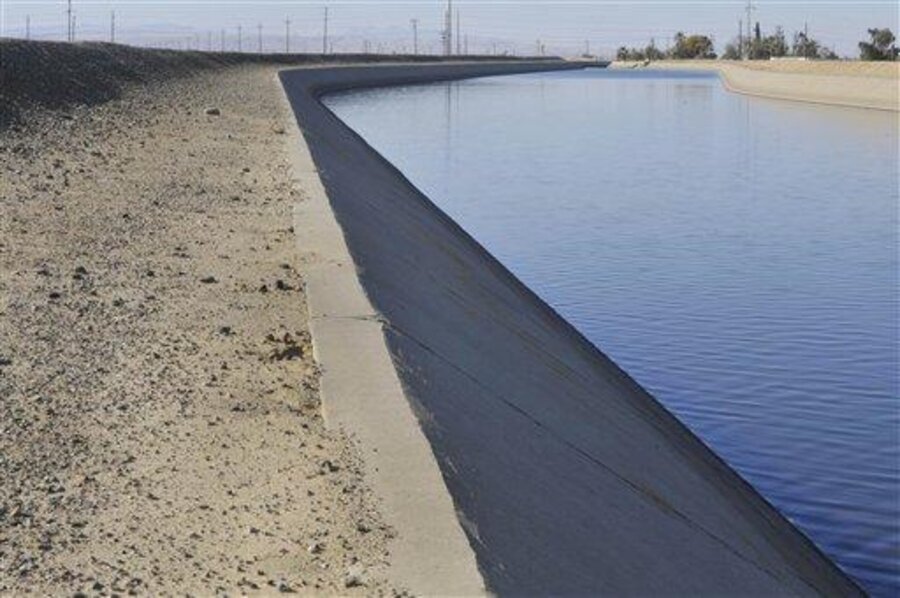Will drilling more wells in California help or hurt?
Loading...
| DOS PALOS, Calif.
The government is spending $40 million in federal stimulus funds to pull water from underground aquifers in drought-stricken California, even as evidence is growing that the well-drilling boom could degrade the quality of water delivered to millions of residents.
Farmers, conservationists and engineers are criticizing the Interior Department's plan to spend taxpayer money on digging more wells, saying the approach risks marring the environment. Canals buckle, aquifers collapse and drinking water turns saltier due to so much pumping, and studies show that the state's water supplies are dwindling.
"We don't need any more straws going down there 'cause we're already doing a pretty good job of sucking it dry," says farmer Dan Errotabere, who has dug three wells as deep as 1,200 feet to irrigate his tomatoes, almonds, and garlic in recent years. "We're using this water as a last resort, but pretty soon we're going to need a policy to protect ourselves from ourselves."
Interior Secretary Ken Salazar says the government is targeting its well-drilling effort to serve remote communities and prop up California's agricultural economy, a $36 billion industry that grows nearly half the country's fruits, nuts and vegetables.
"The role of the federal government is to provide a helping hand. But the federal government can't solve the water problems," Mr. Salazar says as he sampled sliced cantaloupe with local farmers several weeks ago. "California water issues are a big mess and have been a big mess for a long time."
Since the drought began in 2006, hundreds of new wells have been drilled and are pumping around the clock in the state, tapping aquifers that date to the days of the dinosaurs.
In the last six years alone, the amount of water that has been lost from the aquifers coursing beneath the parched Central Valley would be nearly enough to fill the nation's largest reservoir, Nevada's Lake Mead, NASA researchers says Monday.
Salazar announced in July the department would send emergency drought aid from President Barack Obama's stimulus package to drill and renovate up to 135 wells. The total number has dropped since then, and authorities are still drawing up plans about how and where to drill.
The money will go to dig up to 50 new wells, retrofit up to 40 old ones and install temporary pipes and pumps to move water to crops and orchards, federal officials says. More than $2 million of the funds will be used for monitoring the real-time ecological impacts of wells in sensitive areas, and proposed new wells will undergo environmental review.
While everyone agrees the state's aquifers are quickly being drawn down, no California or federal rules govern how much water can be pumped out. Driven by a similar set of concerns, other Western states have set up laws to limit pumping.
Dennis Freeman, who oversees a main canal that irrigates the valley's farm fields, says even without government-financed wells, it is already costing millions to fix the damage wrought by decades of pumping.
"There's no doubt about it, the canal is sinking," he says, gesturing at cracked and buckled concrete panels lining the structure's edge. "There's more wells going in, because our growers gotta get water to their crops. But we're always concerned about the effect that will have."
Federal officials also are monitoring whether pumping could cause the California Aqueduct to sink, slowing deliveries of drinking water to millions of Southern Californians and forcing costly repairs.
Another concern is the quality of water. The federal and state governments allow landowners with wells on their property to swap their underground water for higher-quality canal water.
The brackish groundwater is then pumped into an aqueduct that supplies cities, farms and industry to the south, but that causes what comes out of the tap to grow saltier. The saltier water is expected to cause $18 million in long-term economic damages in those areas, such as problems with water recycling plants and the deterioration of appliances.
Salazar, a former rancher and environmental lawyer, told California farmers the wells and other taxpayer-funded projects would help their businesses stay alive.
"I've watched acres of our land dry up. I've gone to the bank with my brothers and not been able to get financing myself," he says. "You're all wondering what is your future in 30 years, and I know there's a lot of pain right now."
Despite recent storms, the pain is not expected to let up anytime soon. Last month, the Department of Water Resources announced it would release a record-low amount of water to farmers and urban dwellers next year, a response to dry weather and environmental protections for a native fish in the Sacramento-San Joaquin Delta.
As the state struggles to find a solution, even federal water managers are discussing whether this small portion of the $787 billion economic stimulus bill could aggravate the problem.
"It keeps coming up in conversation, because we know the more active wells there are, the more these concerns come to the surface," says Michael Jackson, the Bureau of Reclamation's area manager for south central California.
Editor’s note: The Monitor's Environment section has a new URL. And there's a new URL for the Bright Green blog. We hope you'll bookmark these and visit often.







